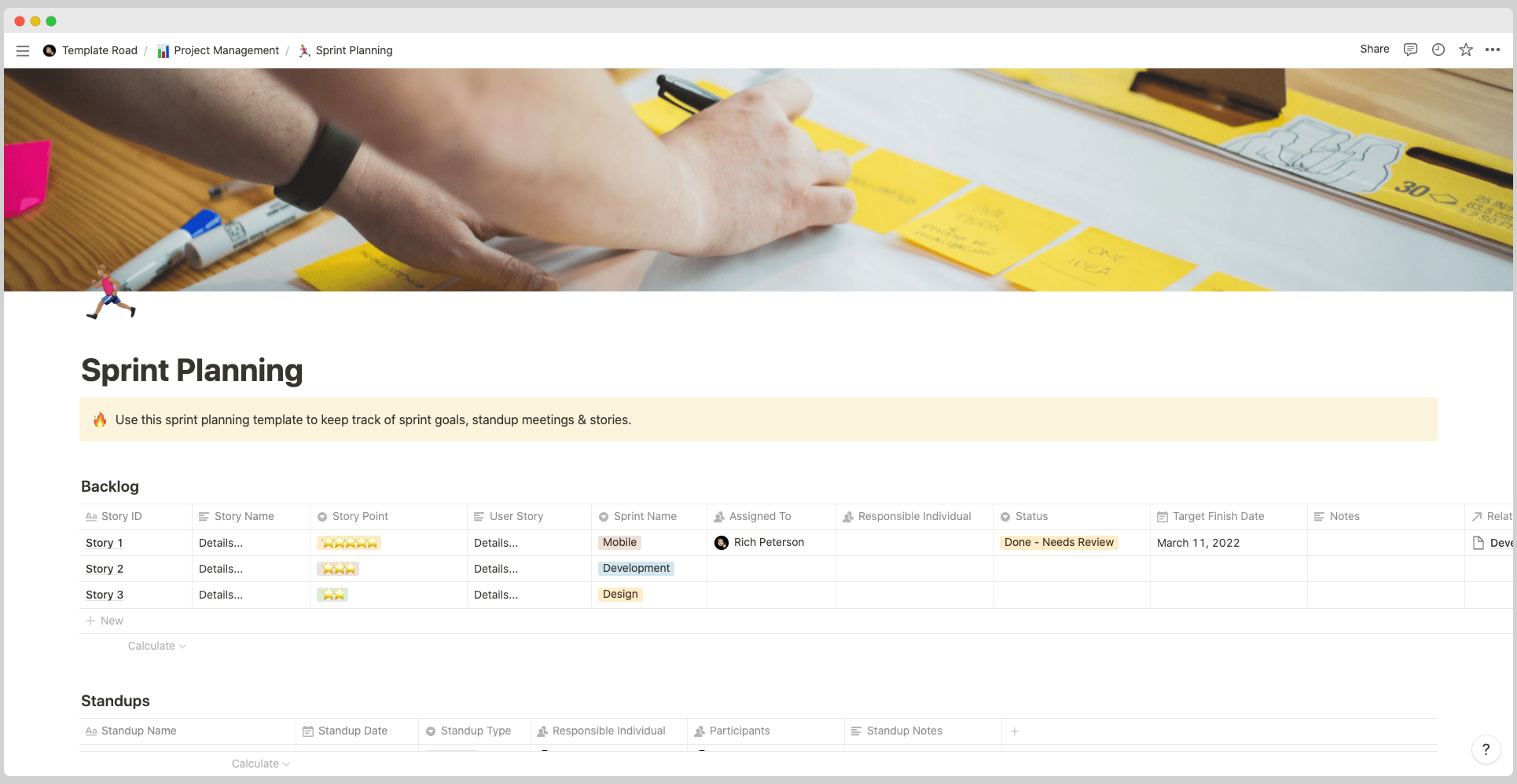Use this Sprint Planning Template so you can easily improve your project management system and monitor important stages of product development. Add relevant information to your online table — like sprint goals, stories, and standup meeting schedules — so you can help keep your team on task and focused on a unified goal.
Buy on
Notion – Sprint Planning Template
$7
Notion – Sprint Planning Template
Sprint planning helps product and engineering teams prioritize work and decide who has the capacity to take on certain projects. But without a clear way to track your scrum capacity planning, it’s hard to know if you’re scheduling the right work at the right time. Use this Sprint Planning Template so you can easily improve your project management system and monitor important stages of product development. Add relevant information to your online table — like sprint goals, stories, and standup meeting schedules — so you can help keep your team on task and focused on a unified goal.
——————————————-
What you need before purchase
- Basic knowledge of how to use Notion
- Paid Notion account if you’ve looking to add lots of content to your template / Notion account (sign up here). Not much content? You’re able to use their free account.
——————————————-
After purchase
After purchase you’ll be able to view the template immediately. The template can added to your Notion account by:
- Click on the template download link in Gumroad
- When viewing the Notion template, click on the “Duplicate” link in the top-right of your screen
- The template will now be available in your own Notion account
For ongoing use, the steps are:
- Login to Notion and select the template you want to view
- Click on the Duplicate link in the top-right of your screen to create a copy to use
- You’ll be able to retain the Notion template and work on the Duplicate (with a new name) and can repeat this process whenever you want to use the template again
The benefits of Sprint Planning
Agile sprint planning is a method for sprint and sprint capacity planning in Agile development.
It can be used to estimate the scope of work (stories) that will be completed during the next sprint.
Sprint planning is performed at the beginning of each sprint, where the development team should determine what will be developed within sprint [the wording here is a little fuzzy; sprint planning is performed at the start of sprint, where the development team plans what will be developed within sprint].
The sprint planning should be based on sprint backlog [there should be a list of what is to be included in sprint, the sprint backlog].
- Sprint planning is about determining roughly how much can be achieved during one sprint. As such, sprint planning generally focuses on which stories will make up the sprint backlog [determining roughly how much can be achieved during sprint; sprint planning focuses on which stories will make up sprint backlog].
- Sprint planning is, at its simplest, prioritising the items in the sprint backlog and assigning them to a sprint. The other tasks that should be completed within sprint [other tasks that should be completed within sprint] are placed into a product backlog for consideration in future sprint planning sessions.
- Sprint planning is performed at sprint planning session that usually lasts one day, where the sprint backlog is created and sprint burndown chart is updated. Each sprint should last between one week and one month long.
- The sprint backlog contains all tasks necessary to complete stories on the sprint backlog [lists of tasks required for sprint].
- The sprint backlog contains all tasks necessary to complete stories on the sprint backlog.
- Sprint planning is usually performed before sprint starts (otherwise sprint planning and sprint execution happen simultaneously). During sprint planning, the team determines which stories will make up the sprint backlog [determining which story will be included in sprint].
As an example, many sprint planning meetings have sprint goals.
In sprint planning, the team should determine sprint goal.
During sprint planning, the product owner and the development team select stories from the product backlog [selecting stories from product].
The sprint backlog will contain estimated measurements for each story, such as story points and time.
Estimated measurements for each story, such as story points and time, will be included in sprint backlog.
















